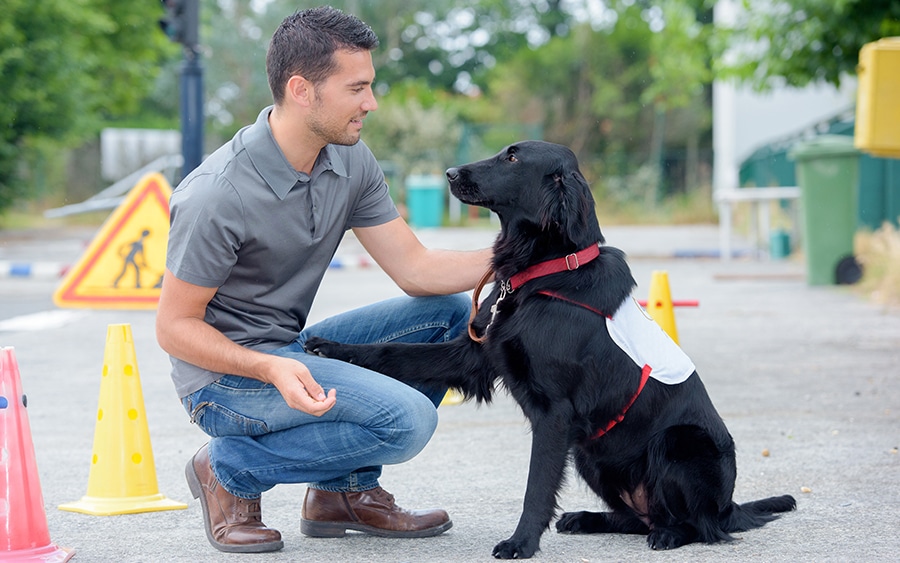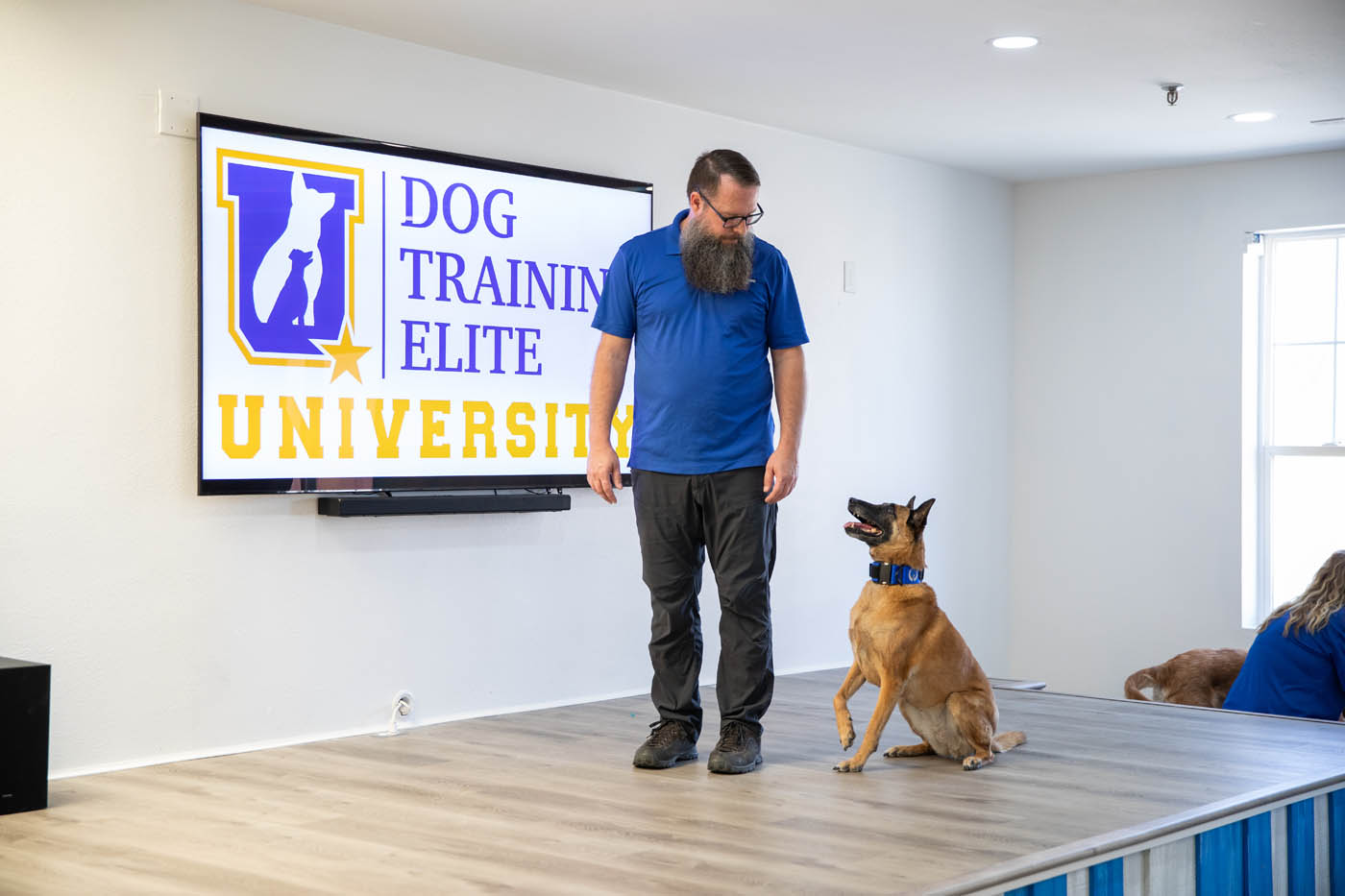The Ultimate Guide to Pet Dog Training: Structure a Delighted, Obedient Animal
Effective canine training is a multifaceted process that pivots on a deep understanding of canine habits and the application of tried and tested strategies. By embracing positive reinforcement and constant command usage, pet dog owners can grow not only obedience but also a strong, trusting partnership with their dogs. The journey does not end with fundamental commands; resolving behavioral issues and producing a nurturing training environment are equally essential parts. As we explore these aspects, it becomes obvious that the course to a well-behaved and content canine friend might hold more complexities than one could at first presume.

Recognizing Dog Habits
Exactly how does a dog's habits mirror its emotional and mental state? A canine's actions can offer as a window into its feelings, demands, and overall psychological wellness.
Body movement also plays an important duty in understanding canine habits. A kicked back posture and open mouth signal comfort, whereas strained muscle mass and pinned ears might recommend stress and anxiety or aggressiveness. Observing these signals is essential for determining the origin creates of a pet's behavior, whether it stems from fear, irritation, or enjoyment.
Additionally, a dog's interaction with its setting and various other pets can supply understanding into its emotion. For instance, a dog that involves happily with other pets is likely feeling social and protected, while one that displays avoidance or aggression might be experiencing stress and anxiety or instability. Recognizing these behavior cues is essential for cultivating a strong relationship in between the owner and the pet, ultimately adding to the pet dog's emotional wellness and wellness.
Important Training Methods
Effective pet training methods are important for cultivating desirable actions and enhancing the bond in between a pet dog and its owner. Using positive reinforcement is just one of the most reliable techniques, where incentives such as treats, appreciation, or playtime are offered to reinforce preferred actions (Dog training). This urges the canine to duplicate those habits, developing a favorable discovering atmosphere
Uniformity is another essential element in pet dog training. Commands should be consistent and clear, and all family members need to apply the same rules to prevent perplexing the canine. Timing is equally essential; rewards should be provided quickly after the desired habits to develop a clear link between the action and the benefit.
Additionally, interesting and brief training sessions work, as canines have differing interest periods. Purpose for sessions of 5 to 15 minutes, depending on the canine's age and power degree. Including play right into training can additionally enhance motivation and enjoyment for both the canine and the owner.
Lastly, patience is important. Pet dogs discover at their very own speed, and preserving a calm attitude will certainly assist ease frustration, ensuring a favorable training experience. These essential techniques lay the groundwork for effective pet training and an unified partnership.
Fundamental Commands to Show

Use treats, praise, and playtime to award your pet dog's successes. By instilling these fundamental commands, proprietors outfit their dogs with the skills essential for a well-behaved and harmonious connection.
Attending To Common Behavioral Problems
Comprehending and dealing with typical behavioral issues in dogs is important for fostering an unified partnership in between family pets and their owners. Many pets show habits such as excessive barking, chewing, or aggressiveness, which can come from anxiety, dullness, or absence of proper training. Identifying the origin teach dog no cause of these behaviors is the very first step toward efficient treatment.
As an example, excessive barking might suggest a need for attention or an action to environmental stimulations. In such cases, proprietors must analyze the dog's setting and offer ample psychological stimulation, such as interactive toys or normal exercise. Eating can typically be managed by redirecting the actions to suitable eat items and making certain that the canine has enough physical activity to lower boredom.
Hostile actions needs mindful handling and may require specialist training support. It's critical to comprehend that penalty can exacerbate anxiousness and aggression, causing a cycle of behavioral problems. Rather, focus on favorable reinforcement strategies to reward desirable behaviors and enhance a sense of protection.
Structure a Positive Training Atmosphere
Developing a positive training environment is essential for enhancing preferable behaviors in canines and alleviating behavior concerns. This setting should be characterized by consistency, support, and a clear understanding of the training purposes. By establishing a routine, pet dogs discover what is anticipated of them, which aids lower anxiousness and complication.
Making use of favorable support strategies, such as deals with, appreciation, and play, cultivates a feeling of protection and inspiration in the pet. Rewarding excellent actions immediately and consistently reinforces the desired actions, making the training procedure extra reliable - Dog training. In addition, instructors need to continue to be individual and calmness, as dogs are sensitive to their handlers' find this emotions
The training space should be without distractions to make certain the pet can concentrate on the tasks at hand. Consider making use of a peaceful room or a secure exterior location. Incorporating play and socialization right into training sessions advertises an all-around approach, boosting the canine's learning experience.
Eventually, a positive training setting nurtures a solid bond between the canine and trainer, resulting in a loyal, delighted pet. By prioritizing this atmosphere, pet proprietors can effectively attend to behavioral difficulties and cultivate a successful training trip.
Final Thought
Reliable canine training counts on an extensive understanding of canine actions and the application of positive reinforcement strategies. By mastering necessary commands and dealing with behavior concerns with patience and clear interaction, proprietors can foster a strong bond with their pet dogs. Creating a helpful training setting enhances safety and security and depend on, ultimately resulting in the advancement of a mannerly and joyful friend. Taking on these principles guarantees a satisfying training experience for both pets and their owners.
Efficient dog training is a multifaceted procedure that hinges on a deep understanding of canine habits and the application of tested strategies. A pet that involves happily with various other pet dogs is most likely feeling social and safe and secure, while one that shows avoidance or hostility might be experiencing tension or insecurity.Efficient canine training methods are vital for promoting desirable behaviors and strengthening the bond between a dog and its owner.Producing a positive training environment is fundamental for enhancing preferable habits in canines and reducing behavioral concerns.Reliable pet dog training depends on an extensive understanding of canine behavior and the application of favorable support techniques.